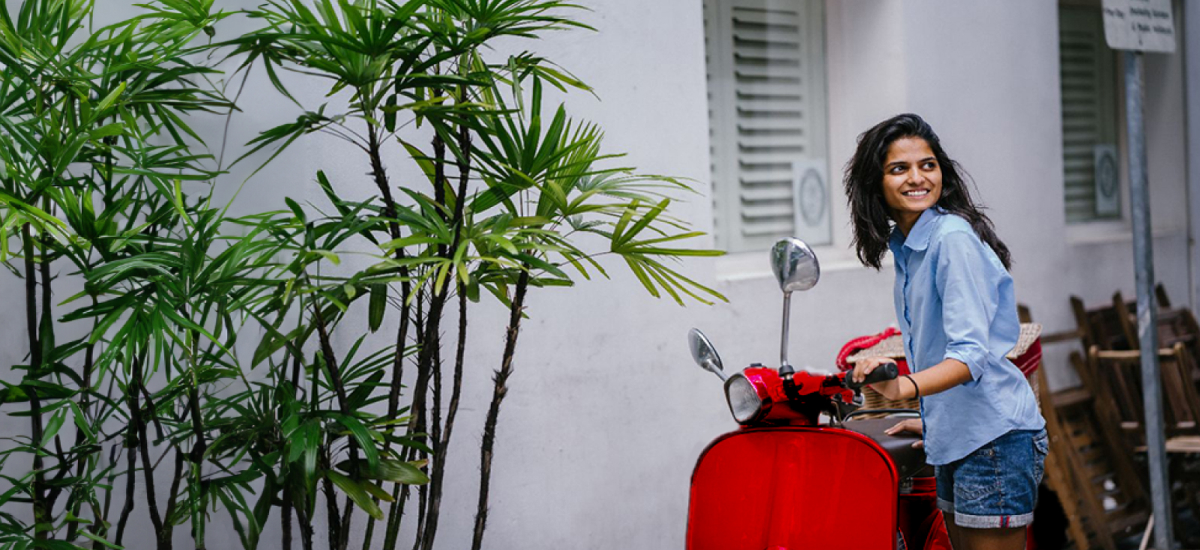Often left exposed and uncovered outside our homes or workplaces, motorbikes and bicycles tend to experience the worst of the weather. No time is this more true than during the monsoon season and cold winters in some areas of India. This is when rain, cold and high winds can lead to extensive damage that needs expensive repairs or even the occasional write-off.
In addition, during extreme weather conditions – such as heavy rains during the monsoon or harsh winters up in the northern part of India – many people choose to use their cars or public transport over cycles and motorbikes. This leads to further neglect and the risk of theft.
Knowing how to keep vehicles safe and protected during the cold or rainy months can save you a lot of expense. This checklist will help you keep things secure and ready to go, even if you’re unable to use them for a while.
How to protect your motorbike
1. Keep it clean
Wet weather can mean plenty of mud and dirt coating your motorbike after an outing, so give it a good clean before putting it away. Make sure it’s dry to avoid water corroding the finish, and add a coat of wax to help prevent moisture and rust.
2. Add an anticorrosive
Even with a wax coating, the debris from the roads can still flick up and corrode your bike. Spray it regularly with an anticorrosive to keep any issues at bay.
3. Keep the battery charged
Cold weather can affect the battery’s ability to function. Make sure it’s always charged during the colder months. If it’s in long term indoor storage, consider getting a battery maintainer. If you live in an area that gets extremely cold and you aren’t planning on using your motorcycle during the winter it is best to remove your bike battery and store it indoors. Keeping it at a stable, warmer temperature will prevent it from freezing or cracking.
4. Use antifreeze in the radiator
If you live in a place that gets snowfall like Manali, Sikkim or Nainital, you need to take special care of your bike’s radiator in winter. Often forgotten but extremely vital, using coolant or antifreeze in the radiator will ensure it doesn’t freeze and cause unnecessary problems in colder temperatures.
5. Change the oil
Dirty oil can corrode the engine, so make sure your tank is freshly filled with high-quality oil to help prevent damage after long-term storage.
6. Keep it indoors if possible
Finding somewhere to store your motorbike indoors is the best option, but using a sturdy cover will do if you don’t have the choice. Just make sure it’s able to stay dry and ventilated.
7. For long term storage, keep the tires off the ground
Investing in tire jacks will keep your tires off the ground, taking the pressure off and helping ensure you don’t get flat spots.
8. Make sure it’s safe from theft
Motorbikes are unfortunately a common target for thieves, so don’t put yourself at risk. Cover it to deflect attention, use high-quality locks, and consider adding an alarm or alarm stickers to act as a deterrent.
How to protect your bicycle
1. Invest in mudguards
Mudguards can make a big difference when it comes to keeping you and your bike as dry as possible in the rains and winter weather, as well as protecting your tires.
2. Find tires to suit the weather conditions
Depending on the type of cycling you’re doing, and the weather where you live, it could be worth changing your tires to specially designed winter ones. These are much more resistant to punctures and grip the road better, which is particularly helpful if you’re cycling on snowy or wet roads!
3. Keep the tires inflated if it’s in storage
They’re likely to deflate a bit depending on how long you keep the bike in storage, but this way it’s unlikely they’ll get completely flattened.
4. Keep it clean, lubricated and in good working order
Winter can take its toll on a bike, so inspect it closely after any journey (especially the chain and brakes), keep it clean to avoid corrosion, and use lubrication weekly.
5. Store the bike indoors if possible
Ideally, a bike would be kept in a dry, ventilated spot indoors, but if this isn’t possible use a proper, fixed cover and tie a plastic bag around the seat to avoid the material rotting.
6. Protect it from theft
Don’t make things easy for potential thieves. Use a double look and chains, including locking the wheels too.
Check out more at Future Generali - Bike Insurance, Car Insurance, Health Insurance, Travel Insurance, Home Insurance, and Lifestyle Insurance.





















